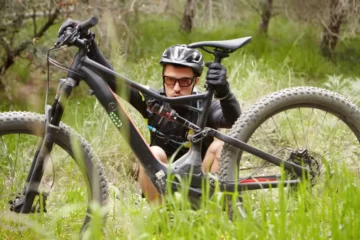Electric bikes, or e-bikes, have taken the world by storm, offering an eco-friendly and efficient mode of transportation. They provide the perfect blend of pedal power and electric assistance, making commuting easier and more enjoyable. However, one burning question remains: Can you ride an electric bike on the highway?
In this comprehensive article, we will explore the various aspects surrounding this intriguing query.
Can You Ride an Electric Bike on the Highway?
Yes, however, the regulations regarding riding e-bikes on highways vary by state. Generally, e-bikes are allowed on highways, but specific rules depend on the classification of the e-bike and state laws. Class 1 and Class 2 e-bikes, which have a maximum assisted speed of 20 mph, are typically permitted on highways or roads with a minimum speed limit.
However, Class 3 e-bikes, capable of reaching 28 mph, may face restrictions on certain roads. Always check your state’s laws to ensure compliance and safety when riding an e-bike on highways.
E-Bike on the Highway: Is It Legal?
1. Highway Regulations
The permissibility of riding an electric bike on the highway primarily depends on local and national regulations.
In many countries, highways are restricted to motor vehicles, such as cars, trucks, and motorcycles. E-bikes, despite their electric assistance, are not generally classified as motor vehicles.
It’s crucial to check the specific laws and regulations in your area regarding e-bike usage on highways. In most cases, you’ll find that it’s explicitly prohibited due to safety concerns and the potential speed differentials between e-bikes and motorized vehicles.
2. Classifying Electric Bikes
Electric bikes are often categorized into classes based on their power and speed capabilities. Understanding these classifications is crucial in determining where you can ride your e-bike.
3. Safety Precautions
Safety should always be a top priority when riding any vehicle, including electric bikes. We’ll discuss the safety gear and precautions you should take when considering highway riding.
Pros and Cons of Riding an Electric Bike on the Highway
Riding an electric bike on the highway can have both advantages and disadvantages. Here’s a breakdown of the pros and cons to consider
1. Pros of Highway Riding
- Efficient Commuting: Electric bikes provide a convenient and eco-friendly commuting option, allowing you to avoid traffic congestion and reduce your carbon footprint.
- Cost Savings: Electric bikes are generally more economical than owning and maintaining a car. They require less fuel or electricity to operate, and you save on parking and maintenance costs.
- Exercise and Health: While riding an electric bike requires less physical effort than a traditional bike, it still promotes physical activity and can help improve your health and fitness.
- Sustainability: Electric bikes are an environmentally friendly mode of transportation, emitting fewer greenhouse gases compared to cars and motorcycles.
- Access to Bike Lanes: In many areas, electric bikes can use bike lanes and shoulders, providing a safer and more efficient route on highways and roads.
2. Cons of Highway Riding
- Safety Concerns: Highways are designed for high-speed motorized traffic, and electric bikes may struggle to keep up with the flow of traffic, which can pose safety risks.
- Limited Speed: Electric bikes typically have a maximum speed limit, which may be insufficient for highway travel. Riding at lower speeds can lead to challenges when merging, overtaking, or keeping up with traffic.
Safety Tips for Riding an Electric Bike on the Highway
- Wear a Helmet: Protect your head with a properly fitted helmet at all times.
- Obey Traffic Laws: Follow all traffic laws, including signals, signs, and speed limits, as if you were driving a car.
- Utilize Bike Lanes and Shoulders: Whenever available, use designated bike lanes or stay on the shoulder to maintain a safe distance from faster-moving traffic.
- Stay Aware: Be vigilant, anticipate unexpected events, and keep an eye on your surroundings.
- Signal Clearly: Make your intentions clear to other road users by signaling your turns and lane changes.
- Safe Speed and Braking: Ride at a speed suitable for the road conditions, and be prepared to brake quickly if necessary.
Conclusion
While electric bikes offer an incredible and sustainable mode of transportation, riding them on the highway is generally not advisable or permitted. Highways are designed for high-speed motorized traffic and lack the necessary infrastructure for safe e-bike riding. Legal regulations, safety concerns, and the risk of accidents all contribute to the consensus that e-bikes and highways are not compatible pairs.





[…] this blog post we will discuss the question “Can you ride an electric bike without […]
[…] the belt drive vs. chain drive debate for electric bikes, the right choice ultimately depends on your preferences and riding style. If you prioritize low […]
[…] a lighter electric bike takes more strength and effort out of riding for a small woman. The easier it is to manage and control the e-bike, the more comfortable and […]
[…] Riding an electric bike in the rain is certainly possible, but it requires careful consideration of safety precautions and maintenance practices. By following these guidelines, you can enjoy the benefits of e-bike commuting or leisure riding even in wet conditions while ensuring the longevity of your e-bike. […]